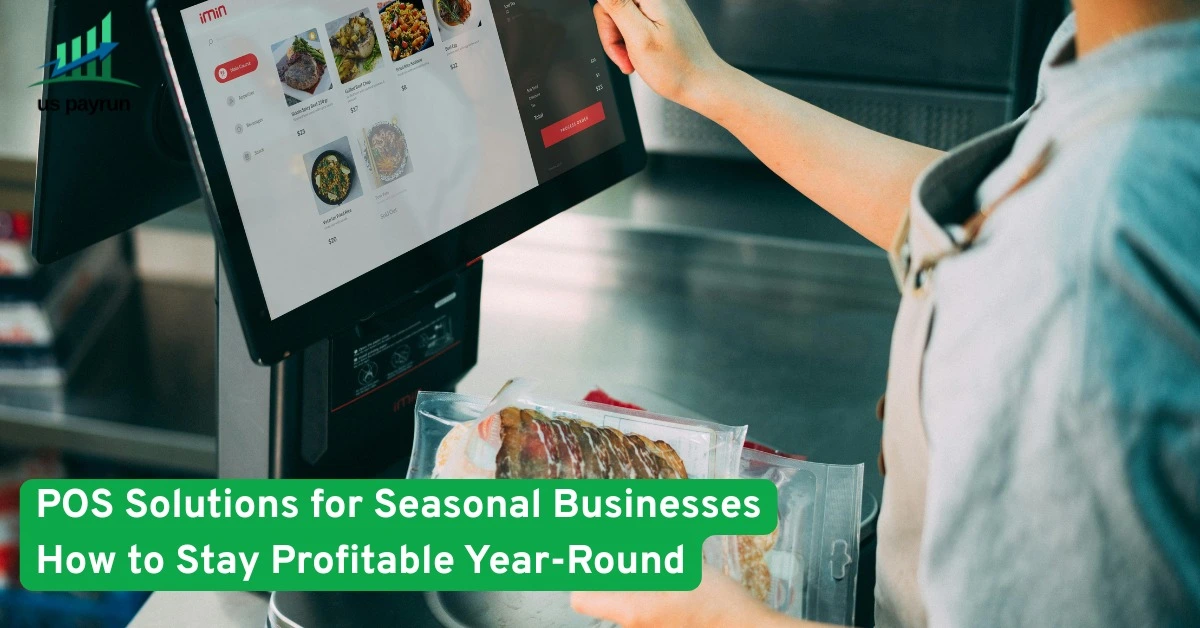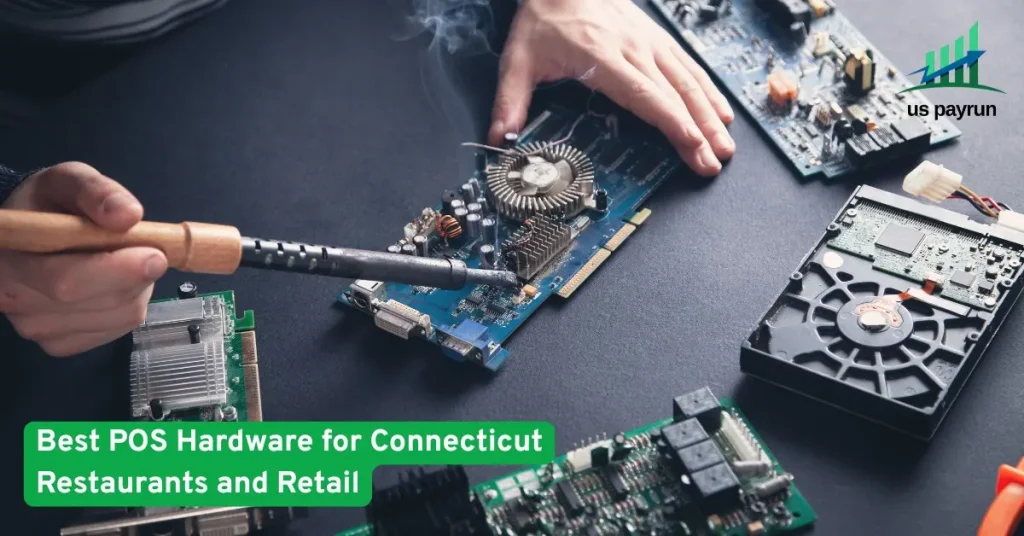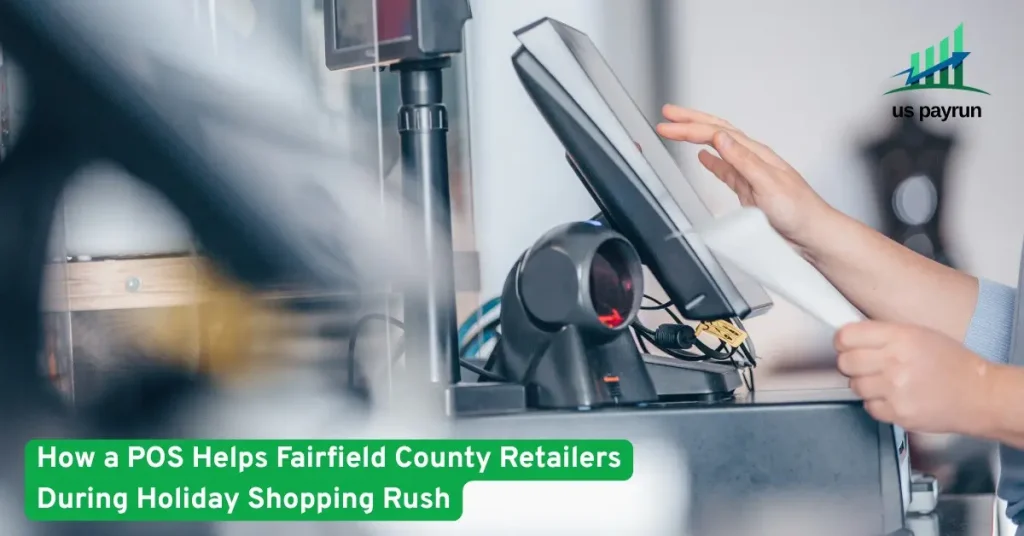
Seasonality Is a Feature, Not a Bug
Seasonal businesses live on cycles. Revenue spikes in peak months and softens in the off season. The right POS strategy turns those cycles into a predictable engine for cash flow, loyalty, and smart inventory use. This guide covers the POS features and workflows that help you maximize peak performance and extend earnings year-round.
1) Core POS Capabilities Seasonal Businesses Need
Seasonal operators have unique requirements. Prioritize these capabilities when choosing or configuring your POS.
-
Fast setup and portability
-
Handhelds and iPad or Android terminals for pop ups, markets, events
-
Offline mode for beaches, mountains, rural fairs
-
-
Inventory with seasons, variants, and bundles
-
Track sizes, colors, and rental conditions
-
Create seasonal bundles such as Holiday Set or Summer Essentials
-
-
Dynamic pricing and promotions
-
Price lists by date range or location
-
Happy hour, early bird, shoulder season discounts
-
-
Deposits and rentals
-
Take deposits, capture ID and waiver notes, track returns and late fees
-
-
Gift cards, passes, and memberships
-
Sell now, redeem later for predictable off season cash flow
-
-
Staff scheduling and permissions
-
Seasonal staff onboarding, time clock, role-based access
-
-
Multi location and pop up support
-
Central catalog and customer data across temporary sites
-
-
Accounting and ecommerce integrations
-
Sync with QuickBooks, Xero, or Zoho
-
Shopify, WooCommerce, or custom web store for preorders and off season sales
-
-
Customer-facing displays and tipping
-
Improve checkout trust and tip adoption for service businesses
-
-
Automations and alerts
-
Low stock alerts, weather or event based promo triggers, abandoned cart emails
2) Peak Season Playbook: Sell More When Lines Are Long
Peak months decide the year. Design your POS for speed, accuracy, and higher average order value.
-
Simplify screens
Keep 6 to 8 tiles per view. Put top sellers on the first screen. Use large tap targets. -
Preset bundles and combos
Offer Meal for Two, Family Pack, Day Pass plus Gear. One tap adds multiple items. -
Timed promos and surge capacity
Scheduled discounts by hour and day. Enable additional lanes on handhelds during rush. -
Smart cross sells
After an entrée, prompt Add fries for 20 percent off or After ski rental, add helmet for a flat fee. -
Express tendering
Enable contactless wallets, tap to pay, quick cash buttons, and saved cards for members. -
Tip prompt optimization
Percent presets with social proof such as Most guests tip 18 to 22 percent. Keep Custom visible to avoid friction.
Peak KPIs to watch: lines per hour, items per minute, error or void rate, tip percentage, AOV, and attachment rate for add ons.
3) Shoulder Season Strategy: Extend Demand
The weeks before and after peak are your multiplier. Use POS tools to warm up demand early and hold it longer.
-
Preorder windows and early bird pricing
Sell passes, rentals, or holiday sets 2 to 4 weeks before peak. Offer small incentives that expire. -
Memberships and punch passes
Create 3 and 6 month memberships that include monthly perks. -
BOPIS and local delivery
Allow Buy Online Pick Up In Store to capture impulse buys when weather opens or closes. -
Event calendars in POS
Tie promotions to local events, school breaks, or festivals. Preload coupon codes and staffing plans. -
Email and SMS from POS CRM
Target last year buyers with one tap campaigns. Segment by purchase history and average spend.
4) Off Season Monetization: Cash Flow When Foot Traffic Falls
Off season does not need to be quiet. Use your POS to sell ahead and diversify income.
-
Gift cards and e-gift cards
-
Promote bundles such as Buy 100 and get 15 bonus.
-
Great for holiday revenue that redeems in peak months.
-
-
Subscriptions and maintenance plans
-
Waxing or tuning subscriptions for ski or surf shops
-
Coffee or dessert clubs for restaurants
-
-
Workshops and experiences
-
POS powered tickets for classes, tastings, photo walks, or kid camps
-
-
Clearance and pack-away programs
-
Automated markdown rules for seasonal overstock
-
Mystery boxes that clear sizes and colors fast
-
-
B2B or wholesale lanes
-
Sell surplus to local businesses via customer groups and special price lists
-
-
Prepaid rentals for next season
-
Lock in bookings with deposits and flexible dates
-
5) Inventory Tactics That Protect Cash
Inventory is cash. A seasonal POS should help you buy right and sell through cleanly.
-
Season codes and tagging
Tag products with SS25, AW25, Holiday, or Eid Campaign to group reporting and markdowns. -
Reorder points and vendor lead times
Set reorder alerts based on sell through velocity and delivery lag, not gut feel. -
Open to buy discipline
Use weekly POS sales and on hand data to cap purchases. -
Kits and bundles to move tails
Combine slow colors or sizes with winners at a discount. -
Dead stock alarms
If a SKU does not sell in 21 days during peak, trigger a markdown or swap.
6) People and Permissions for Seasonal Teams
Seasonal hiring brings speed and risk. Your POS should make staff productive and keep data safe.
-
Role based access
Cashiers cannot export data. Supervisors can approve returns. Managers can view cost. -
Tap to clock in and out
Simple time tracking reduces payroll errors. -
Guided workflows
Required modifiers, allergy flags, and deposit prompts lower training time and mistakes. -
Performance dashboards
See items per minute and upsell rates by staff to target coaching and rewards.
7) Payments, Deposits, and Fraud Controls
Protect margins with flexible payment rules and clear audit trails.
-
Deposits and partial payments
Collect 20 to 50 percent on rentals or special orders. Remainder due on pickup. -
Surcharges and fees compliance
Configure card surcharges or service fees according to local rules. Show them transparently on screens and receipts. -
Refund and exchange policies inside POS
Print policy on receipts and capture return reasons to spot abuse. -
Chargeback defense
Store signed waivers, ID images where legal, and itemized receipts. -
Offline mode safeguards
Set offline card limits and require ID for large offline charges.
8) Omnichannel That Actually Works
Your slow months online can fund your fast months offline.
-
Unified catalog and inventory
POS and ecommerce must share stock to avoid oversells. -
Local pickup and curbside
Promote pickup during storms or cold snaps to keep revenue steady. -
Marketplace connectors
Push selected SKUs to Etsy, Amazon Handmade, or local delivery apps. -
Social and QR menus
For food or cafes, maintain QR menus with seasonal specials and limited runs.
9) Analytics That Predict, Not Just Report
Use your POS data to plan rather than react.
-
Seasonal cohort analysis
Track how many peak season buyers return in the next season. -
Weather and event correlation
Compare sales to temperatures or holiday weekends to set staffing and stock. -
SKU life cycle curves
Identify when new items hit saturation and when to markdown. -
Cash conversion cycle
Days inventory outstanding and payables timing matter more in seasonal models.
10) Implementation Blueprint for a Seasonal POS Rollout
Follow this sequence to minimize risk and reach returns fast.
-
Map your calendar
Plot peak, shoulder, off season, events, and vendor lead times. -
Define core flows
Rentals with deposits, gift cards, memberships, bundles, and pop up setup. -
Choose hardware
One counter terminal, two handhelds, one scanner, one portable printer per lane as a starting point. -
Build the catalog
Use consistent names, season tags, modifiers, and kit SKUs. -
Price and promo rules
Create peak, shoulder, and off season price lists with start and end dates. -
Train staff
Thirty minute sessions with guided checklists. Record quick how to videos in store. -
Go live with a soft launch
Run for two days with friendly customers before the biggest weekend. -
Review and tune weekly
Check AOV, items per minute, and attachment rate. Remove clutter and add one improvement per week.
11) Seasonal POS Checklist
Copy and use this in your team chat.
-
Handhelds and offline mode tested
-
Seasonal catalog with tags and kits
-
Early bird and shoulder promos scheduled
-
Gift cards and memberships enabled
-
Rental deposits and waiver capture on
-
BOPIS and local delivery configured
-
Staff roles and time clock set
-
Refund policy printed on receipts
-
Low stock and dead stock alerts active
-
Weekly sales and cohort reports reviewed
12) Sample KPI Targets by Season
| Season | Primary Objective | Key KPIs | Target Range |
|---|---|---|---|
| Peak | Throughput and AOV | Items per minute, AOV, tip percent | +10 to +20 percent vs last year |
| Shoulder | Extend demand | Preorders, membership sign ups, BOPIS share | +15 percent YoY |
| Off season | Cash flow and list growth | Gift card sales, subscription MRR, email growth | Gift cards 8 to 12 percent of annual sales |
13) Industry Examples to Model
-
Beach rental and cafe
Rentals use deposits and timed returns. Cafe runs daypart promos and QR menus on the same POS. -
Garden center
Peak spring bundles, fall workshops with ticketing, winter gift cards and houseplants. -
Ski shop
Off season service memberships for tuning. Prepaid rentals for holidays. Weather based SMS offers. -
Holiday pop up
Portable POS with offline mode, e-gift cards, and inventory kits for ornaments and décor.
FAQs
What is the best POS for seasonal businesses
The best option supports portable hardware, offline mode, deposits, seasonal pricing, inventory kits, and strong integrations. Choose a system that can spin up pop ups and sync with your accounting and ecommerce.
How do I keep cash flow stable in the off season
Prioritize gift cards, memberships, workshops, and prepaid rentals. Run small online drops and clearance events. Use your POS CRM to retarget last season buyers.
Do I need different price lists for each season
Yes. Create peak, shoulder, and off season lists with scheduled dates. You can pair them with automatic promos to keep teams focused on service instead of manual discounts.
How early should I start preorders
Two to four weeks before expected demand. Offer a small incentive and limited quantities. Use POS deposits to reduce no shows.
What reports matter most
Cohort return rates, sell through by season tag, dead stock aging, items per minute, and attachment rates for add ons. These drive buying and staffing decisions.
Conclusion: Plan by Season, Sell Every Day
Seasonality rewards the prepared. With the right POS setup you can move faster in peak, carry momentum into shoulder weeks, and build dependable off season revenue through memberships, gift cards, workshops, and preorders. Treat your POS as a year round sales and planning system. Your calendar will still have seasons. Your revenue curve can be much smoother.



